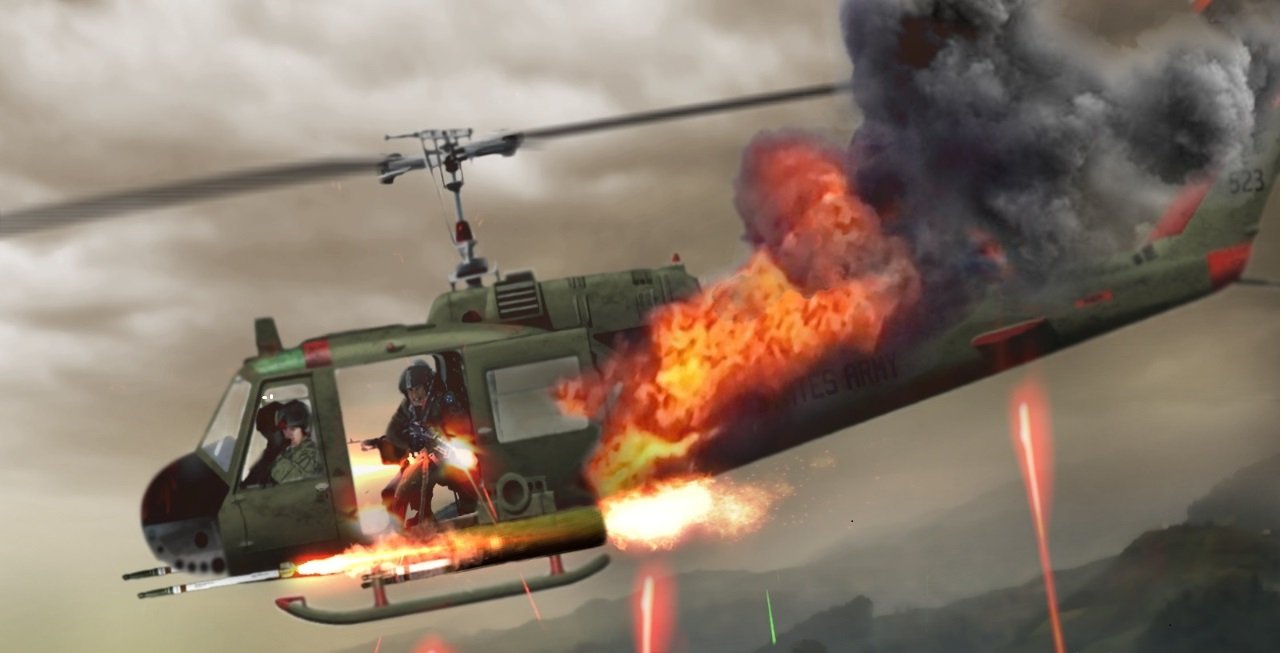introduction
By 1967, according to Gallup polls, an increasing majority of Americans considered our military involvement in Vietnam to be a mistake.
Some Americans felt a patriotic duty to our country that was greater than personal opinion of the war. They were compelled to step up and serve in America’s armed forces.
A small percentage of these patriots pursued higher levels of devotion to America. They volunteered for the most dangerous jobs fighting for their Country and defending freedom in a faraway land.
The price for that devotion was high.
The author presents this book based on his personal experiences in the Vietnam War. His intent is to portray his perspective as an 18-year-old Stinger Gunship Crew Chief/Door Gunner.
He wants the reader to experience what it is like to kill dozens of enemy combatants and collateral, non-combatants. How to live with the frequent near-death experiences and the constant high probability of being killed.
Endure the frequent loss of fellow soldiers in combat. Witness a young soldier losing all sense of humanity as he transforms into a warrior that thrives on killing.
The real-life incidents portray a platoon of Huey UH-1C gunships, called the “Stingers” and its elite, motivated crews.
As a component of U.S. Army assault helicopter companies, the “guns” protected the Huey “slicks” as they inserted or extracted infantry troops from landing and extraction zones.
The gunships regularly conducted “search and kill” missions.
They were often scrambled to provide lifesaving protection for infantry units threatened by enemy forces.
Gunship crews were among the most lethal pilots, crew chiefs, and door gunners in Army aviation. Some gunship crew chiefs had over 400 hundred personal kills.
An intense warrior mentality was crucial to mission success and survival. Killing was a way of life in the guns.
One of the most decorated and experienced aviation combat units in the Vietnam War was the Stingers’ parent, the 116th Assault Helicopter Company, known as the “Hornets”.
Follow the operational strategy as Army Command reassigns the Hornets from III Corps, near Saigon to Chu Lai in I Corps under the command of the 23rd Infantry Division, known as “Americal”.
Experience the rapid increase of lethal enemy encounters.
Americal imposed severe constraints on the Stingers in the aftermath of the My Lai massacre. The Stingers and slick platoons of the 116th fight on.
The young combat veteran becomes “short” with just a few months left in his tour of duty. Americal reassigns the 116th to Quang Tri, one of the most dangerous places in Vietnam.
The mission was to support the Laotian operation, Lam Son 719.
Quang Tri was less than fifteen miles from North Vietnam. The enemy rocket attacks on the Quang Tri base camp were relentless. Soldiers became shell-shocked. War memories would haunt them for the rest of their lives.
The day finally came. The young warrior boards the Freedom Bird for the flight home.
As the eastbound airliner crossed the border of South Vietnam, the returning soldiers break out into celebratory yells of relief.
The onboard jubilation is short-lived. War damaged soldiers experience sudden decompression from the constant lethal threat endured for months on end. Soldiers begin to emotionally break down. The civilian flight attendants rush to calm the suffering heroes.
War news headlines are articulated in real-time to frame the author’s story.
The author attempts to portray a balance of bravado militarism with the constant dilemma combat soldiers faced in Vietnam.
It is a heroic endeavor to believe in upholding nationalistic pride with high principles of duty, honor, and country. But when combat soldiers lose America’s support; when military morale and leadership falters; when the cause for war becomes questionable; a soldier has to find his own way to persevere and survive.

